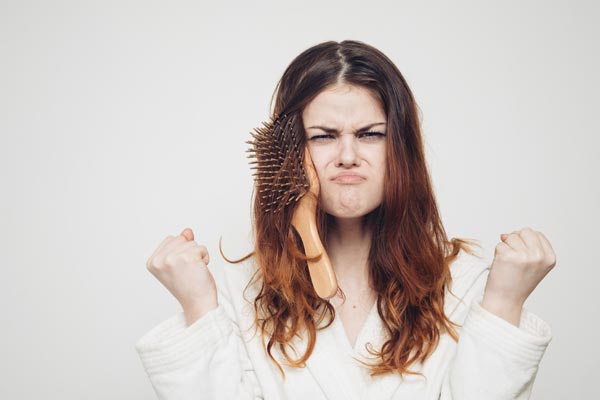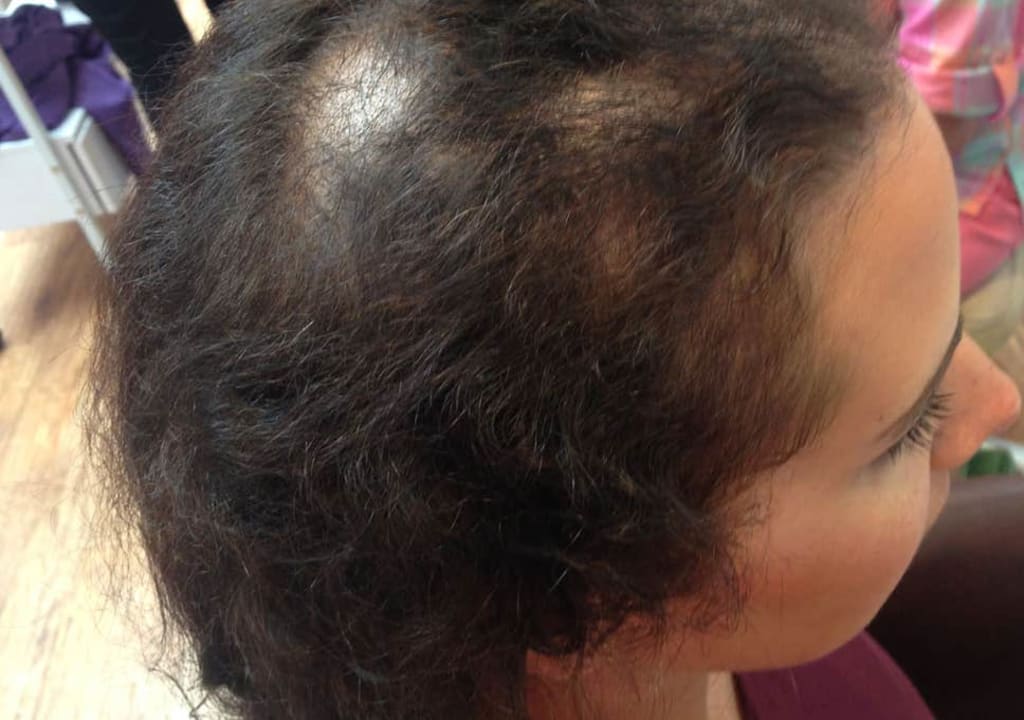Table Of Content

This can cause hairballs to form in the stomach, leading to serious illness. I’ve personally tried a handful of them and found that they definitely help my lashes grow back quicker. I can’t really attest to length, but if you want to speed up the process, you may want to give eyelash growth serum a whirl. For beginners, I recommend RevitaLash’s Advanced Eyelash Conditioner because it is super lightweight and easy to apply.
When should I see my doctor?
There is no universal form of treatment that is effective in all cases. However, there are several strategies, including therapy and medication, that can help people control their urges. People with trich often describe having a feeling on their scalp or skin, such as a tingle or itch, that will only go away by pulling the hair in that area. After pulling the hair, they may have a moment of relief or satisfaction.
CASE EXAMPLE OF TRICHOTILLOMANIA THERAPY
An individual will practice this competing response any time they have the urge to pull hair. Research indicates that some people may have an inherited predisposition for skin picking or hair pulling. Several studies have shown a higher number of BFRBs in immediate family members of persons with skin picking or hair pulling disorders than would be expected in the general population.
Diagnosis
Most adolescents desire privacy in treatment, so a reward system may not be as effective. Treatment may also involve keeping track of hairpulling in a journal and identifying your triggers, which might occur when watching TV or lying in bed. For example, you might focus on using a fidget toy or stress ball instead of pulling your hair. Nearly one-third of adults with trichotillomania report a low or very low quality of life. Excoriation disorder (also referred to as chronic skin-picking or dermatillomania) is a mental illness related to obsessive-compulsive disorder. There is no certain cause of trichotillomania, but the current way of looking at trichotillomania is as a medical illness.
That can help you live a life where your hair and appearance don’t make you feel anxious or ashamed, so you can focus on things that matter most to you. One of the consequences of Trichotillomania is that a sufferer may be left with bald patches which can often have an unusual shape and affect one side more than the other. It can lead to them attempting to cover up their hair loss by using camouflage techniques that include hats, scarves, and false eyelashes. Some may even resort to having false eyebrows permanently tattooed. Sometimes when hair loss can’t be covered, sufferers will avoid social interactions, causing feelings of shame and low self-esteem.
Few Effective Treatments For Hair Picking (Trichotillomania) Or Skin Pulling (Dermatillomania) : Shots - Health News - NPR
Few Effective Treatments For Hair Picking (Trichotillomania) Or Skin Pulling (Dermatillomania) : Shots - Health News.
Posted: Sat, 17 Mar 2018 07:00:00 GMT [source]
While research has provided some evidence of this, the reason behind it is still a mystery. Many times, symptoms begin in late childhood and affect males and females equally. One of the most popular wearables for hair-pulling disorder is HabitAware’s Keen2 bracelet, which costs about $150. While the repetitive and compulsory actions of hair-pulling disorder can look like those in OCD, they are different. In adults, women outnumber men with this condition by as much as 9 to 1. OCD impacts on the lives of the whole family, especially those that love and care for people with OCD.
If you have a family member with trichotillomania, you may be more likely to have the condition. Also, 83% of participants reported anxiety, and 70% reported depression due to pulling. Body dysmorphic disorder (BDD) is a mental illness characterized by a persistent preoccupation with at least one perceived defect or flaw in a person’s physical appearance. Some studies have looked into whether hormonal changes that occur at the beginning of a woman’s menstrual cycle, or during pregnancy, impact trichotillomania.
But experts believe that while a tendency to pull out one’s hair may be inherited to some extent, genes are not solely responsible for the development of trichotillomania. The overall outlook for this condition depends partly on the age of the person who has it. Infants and children with TTM often have the best outlook, with the condition commonly going away on its own.

On average, it is typically between 9 and 13 years, with a peak between 12 and 13 years. [2][3] It is possible that hair pulling may be seen in infants, but this behavior typically resolves during early development. The onset of this disorder may be preceded or accompanied by various emotional states, such as feelings of anxiety or boredom. A stressful event such as abuse, family conflict, or death may also trigger trichotillomania. Many people who have trichotillomania feel embarrassed or ashamed to let other people know they pull.
One reason I love makeup is because of its ability to boost self-confidence. Makeup has helped to “hide” my insecurity which inherently raises my self-esteem. So whilst there are some compulsive and ritualistic similarities between the two there are also important differences. The two methods of treatment that have been scientifically researched and found to be effective are behavioral therapy and medications, which are generally used in combination. Sometimes doctors prescribe medications to help control symptoms.
When it’s severe, it often has extremely negative effects on a person’s happiness, well-being and overall quality of life. While the trichotillomania definition paints a general picture of the disorder, the signs and symptoms related to the condition are what truly define it. Trichotillomania is marked by noticeable physical symptoms like the development of bald patches, sparse eyebrows, or irritated and infected skin. It is also marked by a host of emotionally based symptoms, including guilt, embarrassment, depression, and ultimately, isolation and social withdrawal. The physical, emotional and social impacts of trichotillomania can be distressing.
Trichotillomania (TTM) is a mental disorder in which people feel an overwhelming need to pull out their own hair. Food and Drug Administration specifically for the treatment of trichotillomania, some medicines may help control certain symptoms, such as anxiety and depression. Trichotillomania is one of several body-focused repetitive behaviors (BFRBs) currently classified in the DSM-5 as Obsessive Compulsive and Related Disorders. The disorder is also thought to share characteristics with impulse-control disorders.
Providers also need to differentiate hair-pulling disorder from alopecia areata, a medical condition that causes hair to fall out in small patches. A trichoscopy, medical history, and scalp biopsy can all be used to rule out alopecia as a cause of hair loss. Brain imaging studies have found that people with trichotillomania show increased thickness in areas of the frontal cortex related to the development of habitual behaviors. Differences in this brain area have also been observed in individuals with OCD, suggesting a close relationship between the two conditions.
Trichotillomania typically begins between ages 9 to 13, though it can start before or after this period. When treating youth, clinicians emphasize the importance of using positive reinforcement. In general, it is more effective to reward alternative behaviors than to punish the hair pulling itself.
Physical effects such as pruritus, tissue damage, infection, and repetitive motion injuries to the muscles or joints are not uncommon. Although trichobezoars are rare, they are a serious risk for those who ingest hair. Trichotillomania, also known as “TTM” or “trich,” is a mental health disorder characterized by obsessive-compulsive behavior. If you are trying to get your eyebrows to grow back, some doctors recommend taking vitamins like iron, omega-3 supplements, biotin, and a multivitamin. Always check with your doctor about any vitamins or supplements you want to take.
Although no one treatment has been found to be effective for everyone, a number of evidence-based treatment options have shown promise for many people. Hair pulling disorder usually begins in late childhood/early puberty, and occurs about equally in boys and girls. Hair pulling varies greatly in its severity, location on the body, and response to treatment. Without treatment, hair pulling disorder tends to be a chronic condition; that may come and go throughout a lifetime. Trichotillomania is classified under the category of "related disorders" in the Diagnostic and Statistical Manual of Mental Disorders, 5th Edition (DSM-5). Currently, no medications are specifically approved for the treatment of trichotillomania.

No comments:
Post a Comment